Grantee Research Project Results
Final Report: Production of Secondary Organic Aerosol from Multiphase Terpene Photooxidation
EPA Grant Number: R833750Title: Production of Secondary Organic Aerosol from Multiphase Terpene Photooxidation
Investigators: Shepson, Paul
Institution: Purdue University
EPA Project Officer: Chung, Serena
Project Period: November 1, 2007 through October 31, 2010 (Extended to October 31, 2011)
Project Amount: $333,397
RFA: Sources and Atmospheric Formation of Organic Particulate Matter (2007) RFA Text | Recipients Lists
Research Category: Air Quality and Air Toxics , Particulate Matter , Air
Objective:
The objective of this research was to improve our quantitative and mechanistic understanding of the production of secondary organic aerosol, an important type of air pollutant, from the atmospheric oxidation of α- and β-pinene. We aimed to determine product yields for major gas phase OH- and O3-induced oxidation products with much smaller uncertainty bounds than have previously been reported, thereby improving the capability of air quality models that simulate aerosol production from BVOCs. We aimed to study the oligomerization of aerosol phase species, and study the extent to which photochemistry in aerosols and in cloud water contributes to secondary organic aerosol production. The information produced from the linked laboratory and field studies will be used to develop improved computer model modules that describe secondary organic aerosol from these important terpenes.
Summary/Accomplishments (Outputs/Outcomes):

Figure 1. DESI-MS specttrum of MACR oligomer.

Figure 2. Potential diels-Aider chemistry
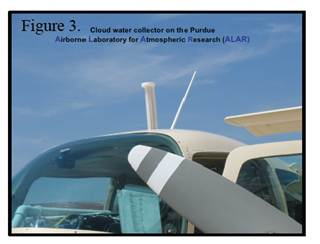
Figure 3., Cloud water collector on the Purdue Airborne
Laboratory for Atmospheric Research (ALAR).
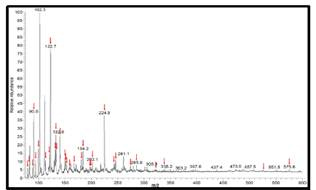
7,000 ft. Peaks labled with red arrows are absent
from the blank.
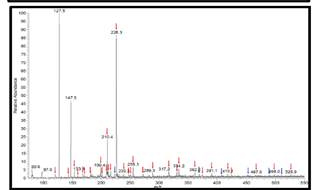
Figure 5. (-) ESI-MS spectrum of cloud water from 7,000
ft. Peaks labled with red arrows are absent from the blank.
Peaks labled with blue arroows are not in the blank but
are present in the 80 Da neutral loss spectrum which
indicates that these species are not organosulfates.
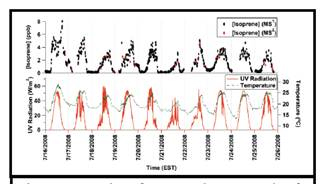
Figure 6. Comparison of PTRMS and PTRLIT modes
of operation of the PTRLIT, for isoprene at UMBS.
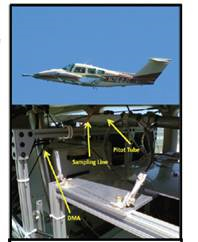
Figure 7. ALAR aircraft (top),
with SMPS installed (bottom).
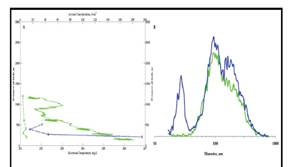
Figure 8. Vertical profile of temperature and aeorsol
number concentations of Airken mode particles
(20-40 mm) over UMBS forest (green) and Lake
Michigan (blue) for JUly 26 flight.
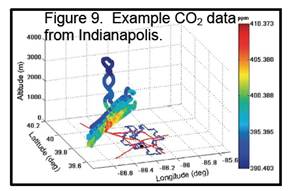
Kp,i = Ci,p/Ca * Ci,g) = f*RT/(106 * MWa*ς*p0i) I
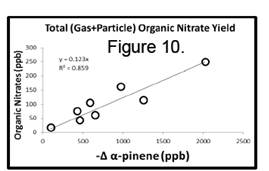
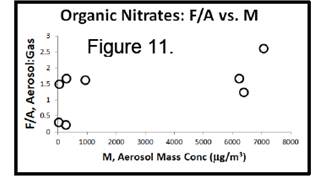

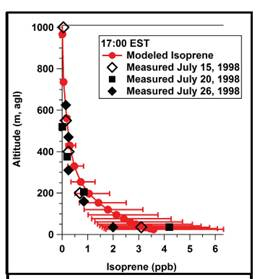
Figure 12. Comparison of 1D model isoprene
with aircraft measurement data.
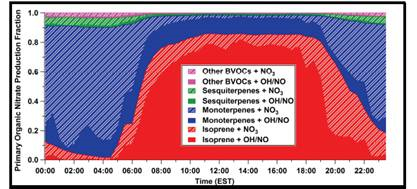
Figure 13. Fraction of the total organic nitrate production rate as
a function of time of day.
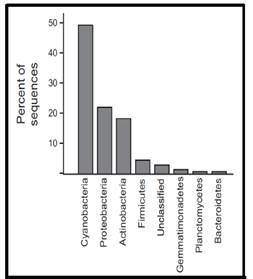
Figure 14. Clasification of sequences from
cloud water samples acquired in 2008.
Journal Articles on this Report : 7 Displayed | Download in RIS Format
| Other project views: | All 14 publications | 7 publications in selected types | All 7 journal articles |
|---|
| Type | Citation | ||
|---|---|---|---|
|
|
Alaghmand M, Shepson PB, Starn TK, Jobson BT, Wallace HW, Carroll MA, Bertman SB, Lamb B, Edburg SL, Zhou X, Apel E, Riemer D, Stevens P, Keutsch F. The morning NOx maximum in the forest atmosphere boundary layer. Atmospheric Chemistry and Physics Discussions 2011;11(10):29251-29282. |
R833750 (2010) R833750 (Final) |
Exit Exit |
|
|
Kourtev PS, Hill KA, Shepson PB, Konopka A. Atmospheric cloud water contains a diverse bacterial community. Atmospheric Environment 2011;45(30):5399-5405. |
R833750 (2010) R833750 (Final) |
Exit Exit Exit |
|
|
Mays KL, Shepson PB, Stirm BH, Karion A, Sweeney C, Gurney KR. Aircraft-based measurements of the carbon footprint of Indianapolis. Environmental Science & Technology 2009;43(20):7816-7823. |
R833750 (2009) R833750 (2010) R833750 (Final) |
Exit Exit Exit |
|
|
Mielke LH, Pratt KA, Shepson PB, McLuckey SA, Wisthaler A, Hansel A. Quantitative determination of biogenic volatile organic compounds in the atmosphere using proton-transfer reaction linear ion trap mass spectrometry. Analytical Chemistry 2010;82(19):7952-7957. |
R833750 (2009) R833750 (2010) R833750 (Final) |
Exit Exit Exit |
|
|
Muller M, Mielke LH, Breitenlechner M, McLuckey SA, Shepson PB, Wisthaler A, Hansel A. MS/MS studies for the selective detection of isomeric biogenic VOCs using a Townsend Discharge Triple Quadrupole Tandem MS and a PTR-Linear Ion Trap MS. Atmospheric Measurement Techniques 2009;2(2):703-712. |
R833750 (2009) R833750 (2010) R833750 (Final) |
Exit Exit |
|
|
Pratt KA, Mielke LH, Shepson PB, Bryan AM, Steiner AL, Ortega J, Daly R, Helmig D, Vogel CS, Griffith S, Dusanter S, Stevens PS, Alaghmand M. Contributions of individual reactive biogenic volatile organic compounds to organic nitrates above a mixed forest. Atmospheric Chemistry and Physics 2012;12(21):10125-10143. |
R833750 (Final) |
Exit Exit |
|
|
Slade JH, VanReken TM, Mwaniki GR, Bertman S, Stirm B, Shepson PB. Aerosol production from the surface of the Great Lakes. Geophysical Research Letters 2010;37(18):L18807 (5 pp.). |
R833750 (2010) R833750 (Final) |
Exit Exit |
Progress and Final Reports:
Original AbstractThe perspectives, information and conclusions conveyed in research project abstracts, progress reports, final reports, journal abstracts and journal publications convey the viewpoints of the principal investigator and may not represent the views and policies of ORD and EPA. Conclusions drawn by the principal investigators have not been reviewed by the Agency.
